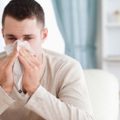
Recent reports from different parts of the United States are suggesting that allergens are more prevalent than usual this year, with pollen counts notably high and many experts predicting that symptoms will last well into the fall.
"The only way to avoid pollen is to move to somewhere that has no grass, trees or weeds – or lock yourself in a sealed, air-conditioned room until the pollen is gone," states Chiff.com, a website that features resources and information about a wide range of topics. "Fortunately, there are less drastic steps you can take to make yourself more comfortable."
Rather than letting your pollen allergy control you and prevent you from enjoying the beautiful outdoors, there are certain steps you can take that make it possible to coexist with irritating allergens. Here are a few you might want to keep in mind this year:
Know your area's pollen count – It's always best to have an idea of how severe this indicator is so that you can prepare as needed and be proactive about taking any medications you have been prescribed before your symptoms start acting up.
Plan around it – According to WebMD, plants typically pollinate early in the morning from 5 a.m. to 9 a.m. That being said, you may want to consider pushing back your daily jog to later in the day or spending more time indoors during these peak hours.
Use a whole house air purifier – These devices are extremely effective, as they actually remove pollen, dust, pet dander and other common allergens directly from the air, ensuring that your home is a comfortable and healthy place that doesn't aggravate your allergy or asthma symptoms.









